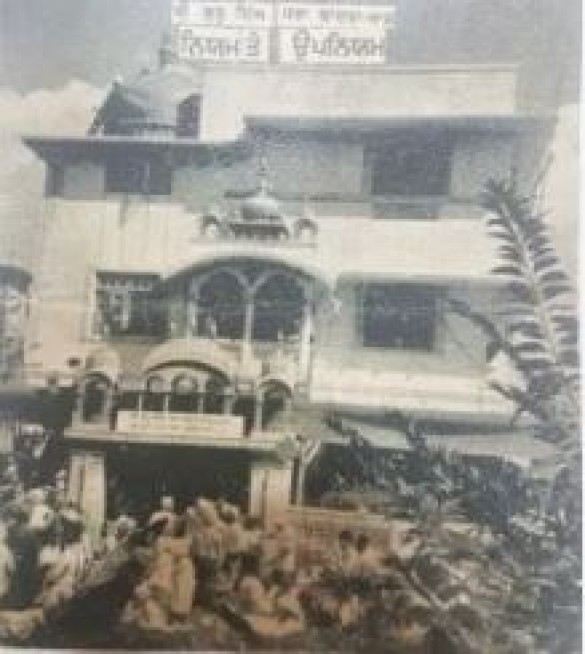
Sikhism, founded by Guru Nanak Dev Ji in the 15th century, is a religion that resonates with the virtues of equality, bravery and generosity. One of the most powerful new-age religions in the history of India, Sikhism gave India some extraordinary men who were willing to sacrifice their lives for causes that symbolised the welfare of the society and truth. These men became the pillars of courage who defended the country and the society. Gurudwara, the sacred shrine of Sikhism, reflects the very foundation of the religion, where apart from spiritual comfort, one also finds the teachings of Guru Nanak Dev Ji being practiced in the form of Langars.
Khadur Sahib: Oldest Gurudwara
Khadur Sahib, also known as Khadoor Sahib, is a village in the Punjab province of India. Near the Beas River, the village of Khadur Sahib is located 38 kilometres from Amritsar, 20 kilometres from Tarn Taran, and 9 kilometres from Goindwal. Eight of the Sikh Gurus have visited Khadur Sahib, making it holy.
In the holy village of Khadur Sahib, Guru Angad the second Master spent 13 years imparting Guru Nanak's teachings to all people. In this place, he formed the first Sikh school, composed the first Gurmukhi Primer, introduced Gurmukhi Lipi, and created the first Gutka of Guru Nanak Sahib's Bani. There, the first Mal Akhara for wrestling was constructed, and Guru Angad began his ongoing campaigns against intoxicants and societal ills. The Guru Angad Dev Gurdwara is the name of this majestic gurdwara.
Khaddi Sahib's opulent Gurdwara was built in honor of Guru Amar Das. The location of a cloth weaver's knaddi (loom) is where the Gurdwara is now. Guru Amar Das wandered into the weavers' pit one pitch-black night while toting a pitcher of water on his head. He was bringing water for his Guru, Guru Angad Dev, from the Beas River, which was 10 kilometres away. He managed to save the water-filled pitcher despite falling. The weaver, who suspected a robber, was awakened by the sounds of the fall.
When the weaver's wife overheard a voice saying "Japji," she informed her husband that the sound belonged to Guru Angad's elderly, destitute servant Amar, not a robber. When Guru Angad learned about the occurrence, he was happy to say, "Amar Das was not homeless and lowly. He will provide shelter for the homeless, honour for the unhonored, strength for the helpless, support for the unsupported, shelter for the homeless, protection for the vulnerable, and freedom for the prisoners. After then, Guru Angad held the official investiture ceremony and named Guru Amar Das as the third Guru Nanak.
Also Read: Indore’s Historic Gurudwara
Gurudwara Nankana Gurudwara: Birthplace of Guru Nanak Dev Ji
Sri Nankana Sahib also known as Gurudwara Janam Asthan is gurudwara representing the home of Metha Kalyan Das and Mata Tripta parents of Guru Nanak Dev Ji. The Nankana Sahib is situated in district Sheikhupura, Punjab. Nanakayan', literally is the ‘home of (Guru) Nanak'. The Gurudwara was established before the end of the 16th century because Guru Arjan(1563-1606) is believed to have visited it.
Maharaja Ranjit Singh (1780-1839), at the insistence of Akali Phoola Singh and Baba Sahib Singh Bedi, constructed the present building, a domed square sanctum with a pavilion in front standing on a spacious, raised platform, and made an endowment of about 18,750 acres of land for the maintenance of the Guru ka Langar. Pakistan's muslim run WAQF board seized control of Sikh Gurdwaras in Pakistan, their lands and revenues. Sikh is barred from visiting many Gurdwaras in Pakistan.
Also Read: Bota Singh And Garaja Singh: Two Tigers